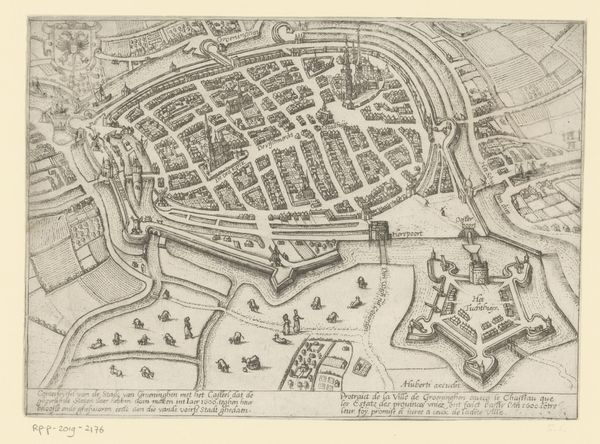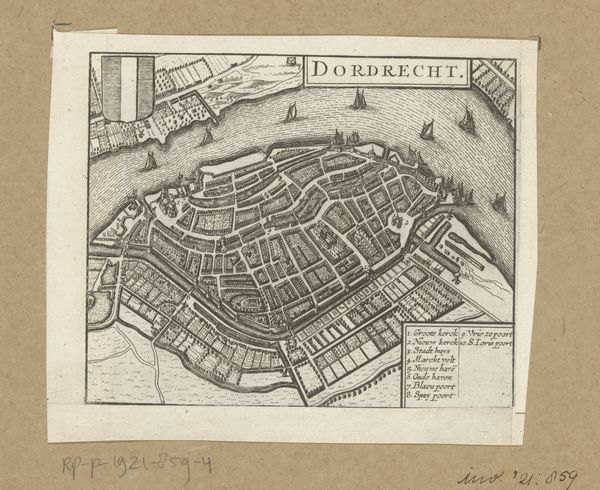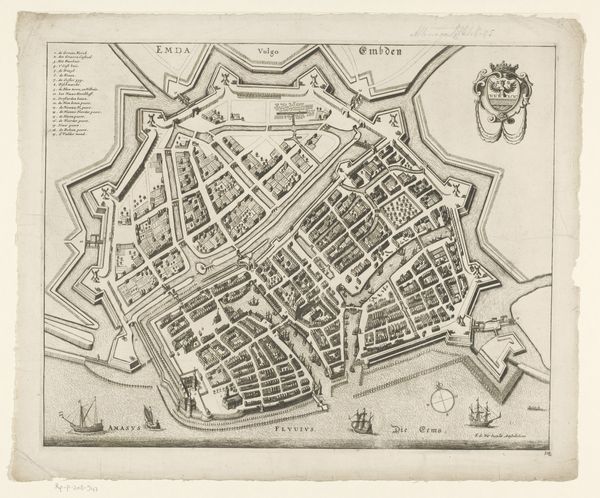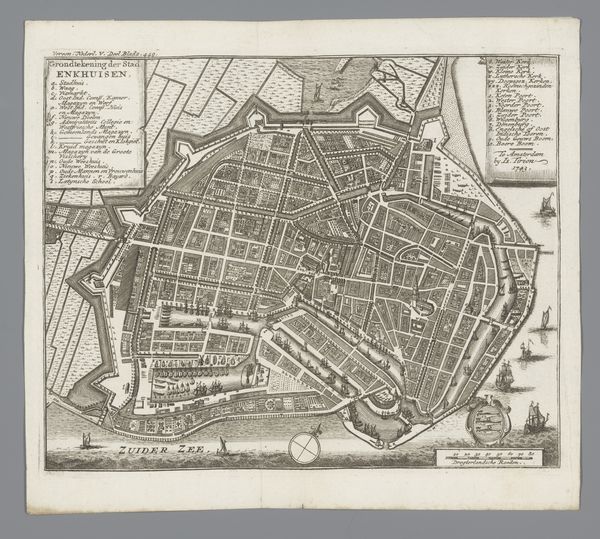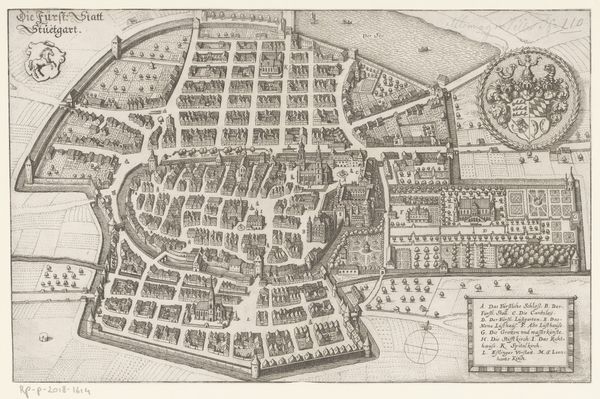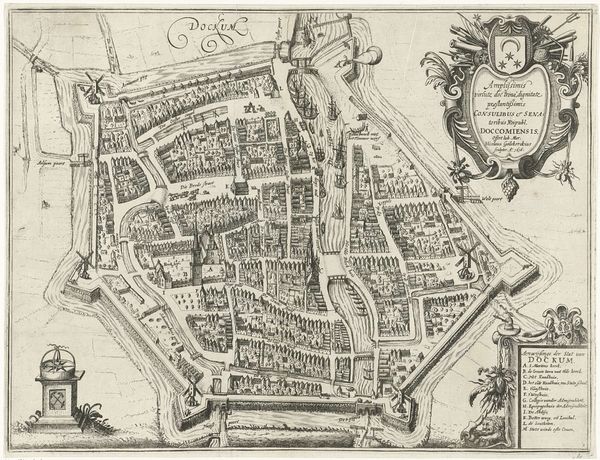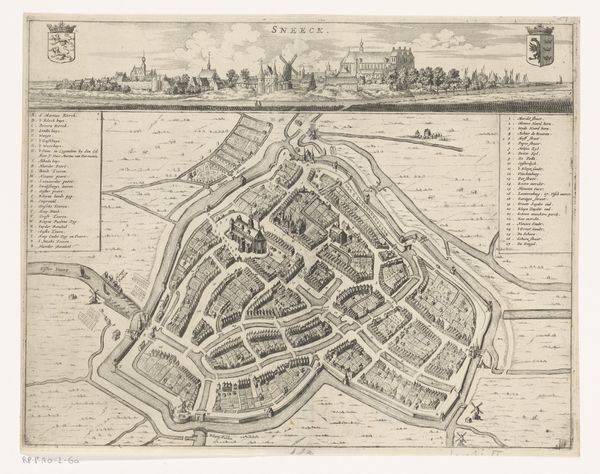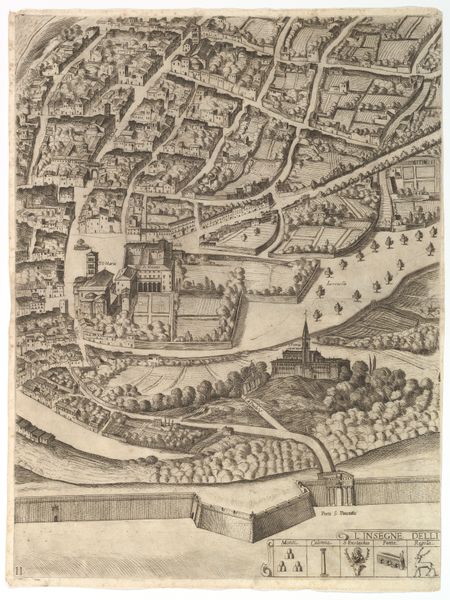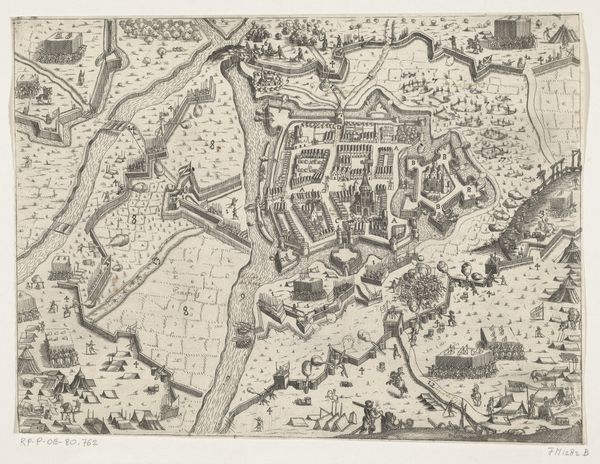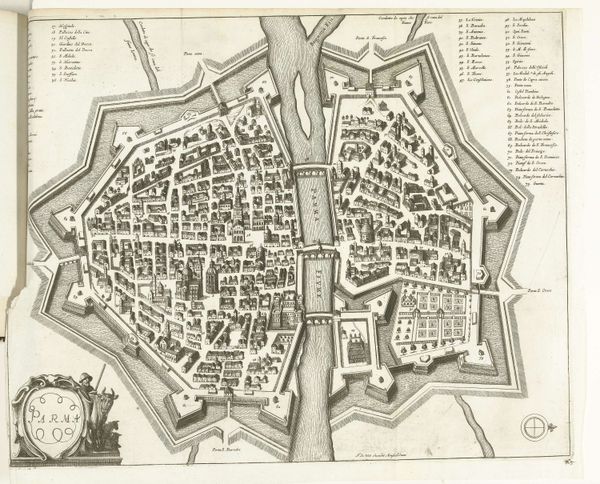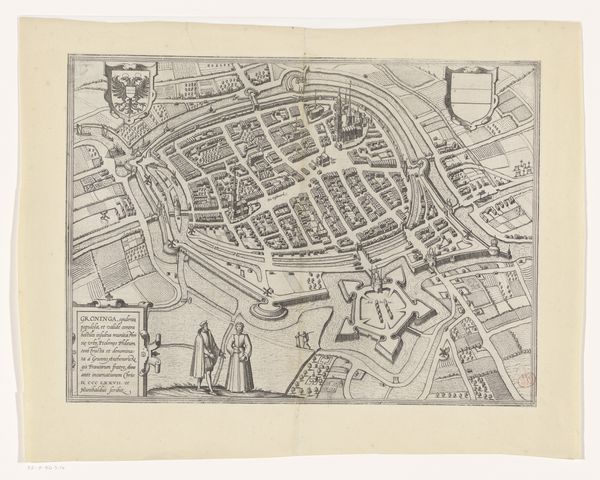
drawing, print, paper, ink, engraving
#
drawing
#
dutch-golden-age
# print
#
paper
#
ink
#
cityscape
#
engraving
Dimensions: height 128 mm, width 144 mm
Copyright: Rijks Museum: Open Domain
Curator: It feels like peering into a secret world, all organized and compact. I wonder what it was like to wander those streets back then. Editor: Indeed. What we have here is an intriguing cityscape, a "Plattegrond van Tiel," created around 1660, part of the Dutch Golden Age. This drawing, rendered in ink and engraving on paper, offers a fascinating glimpse into the town of Tiel during that era. It’s currently held in the Rijksmuseum collection. Curator: "Fascinating" is a polite way to put it. I see a rigid structure trying to contain something vibrant. I mean, look at those regimented rows of buildings compared to the almost chaotic sprawl beyond the walls! The contrast is intense. What do you think it means? Editor: It highlights a tension inherent in city planning of the time. Walls representing not just physical boundaries but also demarcations of power, control, and civic identity. We must consider Tiel’s strategic location; fortifications were essential, but so too was access to the river, "De Wael Stroom", which you can see flowing along the bottom, vital for trade and transportation. Also notice the symbols and crests: they communicated the ruling powers to those within and outside of Tiel. Curator: So, a power play, literally mapped out. And these details aren’t just lines on paper. People lived here, loved here, struggled here, right? Those rigid structures both protected and imprisoned them, I would say. Editor: Precisely! And if you delve deeper, we see further elements of a social structure visible even in its layout: the gates mentioned like “Buerenfe Poort," each were key points of access and control that speak to a strict monitoring of entry and exit, the river showing an open flow for commerce… It's like reading a biography written in streets and walls. Curator: I will agree on that. When I look at it knowing its history, that level of detail just adds to the underlying unease. Thank you for this interesting dive into history; it made me question cityscapes like never before! Editor: You're welcome. Analyzing the visual vocabulary of prints such as this allows us a nuanced view of the society it depicts; even with an overhead view we gain greater empathy of their world.
Comments
No comments
Be the first to comment and join the conversation on the ultimate creative platform.
